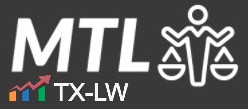The IRS has called out improper Employee Retention Credit claims filed by taxpayers and their advisors. It has also failed to pay many valid claims, even to this very day.
The IRS has taken a position that ERC claims based on partial shutdown due to government orders require a 10 percent reduction in gross receipts or employee time. Failure to provide this proof has resulted in ERCs being denied by the IRS. This is true even when there are other records that show that there was a more than nominal impact on the taxpayer’s business.
These issues are found in the IRS notice that was issued that interpreted the ERC statute. But how bright of a line is the 10 percent rule? Is the rule an exclusionary rule or merely a safeharbor that taxpayers can use? The case of Stenson Tamaddon LLC v. IRS, Docket No. No. 24-cv-01123 (Aug. 18, 2025), decided by the U.S. District Court for the District of Arizona, gets into these issues.
Contents
Facts & Procedural History
This case was brought by a tax advisory firm that specialized in helping businesses with Employee Retention Credits. The company was to be paid from the proceeds of ERC credits refunded to its clients. The fees were contingent based on the credits being allowed.
The tax form filed suit against the IRS challenging IRS Notice 2021-20. This was the comprehensive guidance the IRS issued to set out ERC eligibility requirements. The tax firm argued that the IRS was applying certain provisions of the Notice as binding rules rather than interpretive guidance. One example was the “nominal effects” test that uses a 10 percent threshold for determining whether business operations were partially suspended due to government orders.
The court case was decided by the trial court on summary judgment. The summary judgment evidence included evidence that IRS agents were mechanically applying the 10 percent threshold to deny claims even when there are other factors that show a substantial business disruption.
The core dispute centered on whether taxpayers had to meet specific numerical thresholds to qualify for the ERC. This has been the IRS’s position on audit. Was the IRS wrong? Is the IRS required to conduct individualized analyses based on facts and circumstances rather than just applying this 10 percent rule?
Employee Retention Credit Eligibility
The Employee Retention Credit or ERC is part of the CARES Act. It is a refundable tax credit intended to help businesses retain employees during the COVID-19 pandemic. The ERC provided financial relief to employers whose operations were adversely affected by the pandemic while they continued paying wages to their workforce.
Under the tax code, there were several ways employers could qualify for the ERC. One was where businesses had their operations “fully or partially suspended” during the calendar quarter due to orders from an appropriate governmental authority that limited commerce, travel, or group meetings due to the coronavirus disease 2019 (COVID-19).
This statutory language created immediate interpretive challenges. What constitutes “partial suspension”? How much disruption is required to meet this standard? Which governmental authorities are “appropriate” for purposes of creating qualifying orders? The statute provided the framework but left substantial room for administrative interpretation.
The IRS received authorization to issue guidance necessary to implement the ERC program. This brings us to Notice 2021-20 which attempted to answer these and dozens of other questions about ERC eligibility and administration.
What Orders Create Qualifying Business Suspensions?
The ERC statute requires that business suspensions result from “orders from an appropriate governmental authority.” Notice 2021-20 interpreted this language to limit qualifying orders to those issued by the federal government or by state and local governments that have jurisdiction over the employer’s operations.
This interpretation excluded orders from governmental authorities that might substantially affect a business but lack direct jurisdiction over its operations. For example, orders from neighboring jurisdictions that prevented customers from traveling to a business location would not qualify under the IRS interpretation, even if they caused significant revenue losses.
The Notice also addressed what constitutes “partial suspension” of business operations. Rather than leaving this determination entirely to case-by-case analysis, the IRS provided specific guidance through the “nominal effects” test that was what was in dispute in this case.
How Does the “Nominal Effects” Test Work?
FAQ 11 of Notice 2021-20 establishes the framework for determining when business operations are “partially suspended” due to government orders. The Notice states that essential businesses can qualify for the ERC if “more than a nominal portion of its business operations are suspended by a governmental order.”
The Notice then provides specific mathematical criteria for this determination. A portion of business operations would be deemed “more than nominal” if either the gross receipts from that portion represented at least 10 percent of total gross receipts, or the hours of service performed by employees in that portion represented at least 10 percent of total employee hours, both measured against the same calendar quarter in 2019.
This 10 percent threshold appeared in many IRS denial letters, many of which are currently being appealed by taxpayers, and became a source of significant confusion among tax professionals and business owners. Many interpreted this as an absolute requirement, meaning that businesses with less than 10 percent impact from government orders could not qualify for the ERC under partial suspension.
However, as relevant in this court case, the Notice also included language requiring evaluation “under the facts and circumstances” and stated that businesses “may be considered” to have partial suspension meeting the criteria. This suggested that the 10 percent standard might be a safe harbor rather than an absolute barrier.
Does the 10% Standard Create an Absolute Bar to ERC Claims?
The court’s analysis of the “nominal effects” test provides the most significant practical guidance from this case for ERC taxpayers and their advisors. The taxpayer argued that the IRS was applying the 10 percent threshold as a rigid rule and automatically denying claims that fell below this level regardless of other circumstances demonstrating substantial business disruption. This is in fact what the IRS has been doing.
But with that said, the court explicitly rejected the characterization of the 10 percent standard as an exclusionary rule. Instead, the court found that the Notice created a safe harbor above which businesses would automatically qualify, while still requiring individualized analysis for situations that might warrant eligibility despite falling below the mathematical threshold.
The court emphasized that the Notice used permissive language stating that businesses “may be considered” eligible and required evaluation of the “facts and circumstances.” The 10 percent threshold provided a baseline for automatic qualification rather than a ceiling above which eligibility was impossible.
While it is just a district court ruling, this interpretation has sweeping implications for tax litigation and ERC claim disputes. The court’s holding means that the IRS cannot mechanically apply the 10 percent standard without considering additional evidence of substantial business disruption that might support eligibility even when mathematical thresholds are not met.
The decision also provides important ammunition for taxpayers facing ERC denials based solely on failure to meet percentage thresholds. These taxpayers can now point to federal court precedent establishing that such mechanical application violates the IRS’s own guidance requiring facts and circumstances analysis.
The Takeaway
This case represents a significant victory for taxpayers with respect to the ERC. It establishes that the IRS cannot mechanically apply numerical thresholds from Notice 2021-20 without conducting individualized facts and circumstances analysis. The court’s finding that the 10 percent “nominal effects” standard creates a safe harbor for automatic qualification rather than an absolute barrier to eligibility provides important ammunition for businesses whose ERC claims were denied based solely on mathematical criteria. This precedent will no doubt be challenged and evolve over time, as the tax litigation for ERC credits will no doubt be substantial and it has just started. This is one of the first rulings on ERC issues to date.
Watch Our Free On-Demand Webinar
In 40 minutes, we'll teach you how to survive an IRS audit.
We'll explain how the IRS conducts audits and how to manage and close the audit.


